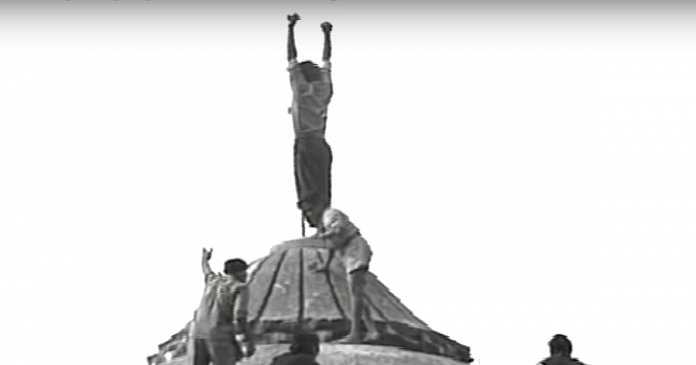I began yelling, but was suddenly clubbed from behind. I fell to the ground. My notebook was wrestled from my hand. A sandal-clad foot stomped on my glasses.
As a research student in what was then Madras in the mid-1970s, one thing that emerged from my interviews was a clear appreciation for the power of religious fervour in the pursuit of political goals.
Two decades later, as the correspondent for The New York Times in Delhi, the lessons of my year in Madras returned again and again, although now on the national stage. By late 1992, the BJP, riding a wave of regional electoral victories, had its eye firmly on P.V. Narasimha Rao and his stumbling Congress government. The BJP political strategy was simple: enflame the religious fervour of the majority Hindu population, and then stampede to power on a tide of popular acclaim. And the spark for this blaze: publicly denounce Muslims for their purported privileges, and fan a sense of grievance over historical injustice at the hands of 16th-century Mughal invaders.
There was no more perfect symbol for this historical travesty than a small, triple-domed Babri Masjid in the rural town of Ayodhya, a mosque not only erected by the first Mughal king, Babur, but a structure built on the precise spot where the Hindus believe the god Ram was born 5,000 years ago. It had to go. Hindu political and religious leaders vowed its destruction, and promised in its place a magnificent temple to Ram. Work would begin at 12.26 pm on 6 December 1992.
Driving into Ayodhya that morning with my running partner Peter Heinlein, the India correspondent for Voice of America, was slow going. Both sides of the narrow asphalt road were dense with militant young men in saffron headbands, chanting, waving banners, thrusting their fists skyward. Our car’s horn, bleating incessantly, was useless. We left the car and walked the rest of the way. By the thousands, the young militants, calling themselves kar sevaks, spread out across the dust-churned plain and small hillocks before the mosque. Shouts of “Jai Shri Ram, Jai Shri Ram” (Hail Lord Ram, Hail Lord Ram) rent the air.
Hindu leaders, both religious and political (although the distinction was often difficult to discern), stirred the crowd with fiery speeches, equally extolling the righteousness of Hindu aspiration while denigrating the country’s Muslim minority. As the hour appointed by Hindu soothsayers approached, young men began clambering to their feet. Slogans were screamed at even higher volumes. From somewhere, sledgehammers appeared. Many of the young zealots produced steel pipes and rods. More and more heavy tools found willing hands. I turned to speak to one excited young man, typical of many.
“I will die,” he said. “There is no reason for me to live if we do not build this temple. If I must die destroying the structure, I will die.”
And then the hour struck. An immense roar erupted from the crowd. Screaming “atom bomb, atom bomb”, a phalanx of young men hurtled through the mass of frenzied humanity, plowed through a timorous line of police, and stormed over the frail fencing around the masjid. In a matter of moments, a man in a saffron bandana appeared on one of the domes, and began flailing away with a sledge hammer; each blow met with a bellow from the crowd.
Then suddenly, as if by signal, the crowd’s focus shifted, away from the mosque and onto the sprinkling of foreign journalists. I saw a colleague from the Los Angeles Times being harassed and tried to intervene. I began yelling, but was suddenly clubbed from behind. I fell to the ground. My notebook was wrestled from my hand. A sandal-clad foot stomped on my glasses, which had spun off my head. Somehow I managed to get up.
I stumbled into a small courtyard and saw Peter covered in blood, his head gashed open. He seemed to be in some pain, and clearly needed medical attention. We managed to clean him up some and miraculously found our car and driver. A brief stop at a somewhat Dickensian medical facility in neighboring Faizabad convinced us that we immediately had to fly back to Delhi, both so that Peter could get stitches in his head, and that we could file our stories.
The sledge hammers swung by Hindu zealots that December day rang in a new order in Indian life. The razing of the Babri Masjid, the first mosque destroyed since independence, marked the ascendency of a Hindu nationalism; it was difficult to spy even shards of the country’s erstwhile secularism.
What remains to be seen in the 21st century is not how a 16th-century mosque became a flashpoint for religious violence, but whether in fact India’s secular institutions of democratic governance and the rule of law are sturdy enough to withstand the assaults of religious zealotry and intolerance. The verdict is in doubt.
Edward A. Gargan was the South Asia bureau chief for The New York Times in the 1990s. He has reported from Africa, the Middle East, and East Asia. He now divides his time between Beijing and Martha’s Vineyard.



